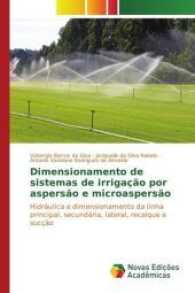基本説明
The Concealed Information Test has been supported by decades of research, and is used widely in Japan. This is the first book to focus on this exciting approach and will be of interest to law enforcement agencies and academics and professionals in psychology, criminology, policing and law.
Full Description
Traditional techniques for detecting deception, such as the 'lie-detector test' (or polygraph), are based upon the idea that lying is associated with stress. However, it is possible that people telling the truth will experience stress, whereas not all liars will. Because of this, the validity of such methods is questionable. As an alternative, a knowledge-based approach known as the 'Concealed Information Test' has been developed which investigates whether the examinee recognizes secret information - for example a crime suspect recognizing critical crime details that only the culprit could know. The Concealed Information Test has been supported by decades of research, and is used widely in Japan. This is the first book to focus on this exciting approach and will be of interest to law enforcement agencies and academics and professionals in psychology, criminology, policing and law.
Contents
Part I. Introduction: Introduction. Science on the rise: birth and development of the Concealed Information Test Christopher J. Patrick; 1. Encouraging the use of the Guilty Knowledge Test (GKT): what the GKT has to offer law enforcement William G. Iacono; Part II. The Laboratory: Theoretical and Empirical Foundations of the Concealed Information Test: 2. Detecting concealed information using autonomic measures Matthias Gamer; 3. Detecting concealed information in less than a second: response latency-based measures Bruno Verschuere and Jan De Houwer; 4. P300 in detecting concealed information J. Peter Rosenfeld; 5. Detecting of deception and concealed information using neuroimaging techniques Matthias Gamer; 6. New and old covert measures in the Concealed Information Test Eitan Elaad; 7. Theory of the Concealed Information Test Bruno Verschuere and Gershon Ben-Shakhar; Part III. Field Applications of Concealed Information Detection: Promises and Perils: 8. Limitations of the Concealed Information Test in criminal cases Donald J. Kraphol; 9. Validity of the Concealed Information Test in realistic contexts Eitan Elaad; 10. Leakage of information to innocent suspects M. T. Bradley, Clair A. Barefoot and Andrea M. Arsenault; 11. Countermeasures Gershon Ben-Shakhar; 12. Psychopathy and the detection of concealed information Bruno Verschuere; 13. Clinical applications of the Concealed Information Test John J. B. Allen; 14. Daily application of the Concealed Information Test: Japan Akemi Osugi; 15. The Concealed Information Test in the courtroom: legal aspects Gershon Ben-Shakhar and Mordechai Kremnitzer; Part IV. Conclusions: 16. Practical guidelines for developing a Concealed Information Test Ewout Meijer, Bruno Verschuere and Gershon Ben-Shakhar; Epilogue Gershon Ben-Shakhar, Bruno Verschuere and Ewout Meijer.








